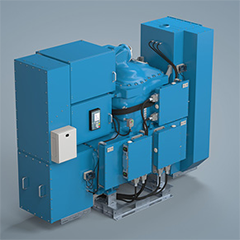Siemens will supply 102 SF6-free, gas-insulated 8VM1 high-voltage switchgear (GIS) to Siemens Gamesa by the middle of next year. The switchgear will protect each wind turbine individually against overloads and short-circuits and make it possible to supply electricity reliably and without interruption. Developed for wind farms, the 8VM1 from the blue GIS portfolio operates with vacuum circuit-breaker technology and with clean air instead of sulfur hexafluoride (SF6) as the insulating medium. The switchgear are destined for the British East Anglia One offshore wind farm, which will supply up to 600,000 British homes with electricity starting in 2020. Siemens Gamesa is building the wind farm for ScottishPower Renewables in approximately 300 square kilometers of space, and is using a new connection and wind farm grid concept with a voltage of 66 Kilovolts (kV). Compared to the usual 33 kV connection, it increases the transmission capacity of each cable and simultaneously reduces transmission losses, thus cutting costs. For this purpose, Siemens Gamesa has adapted the substation transformers and converters to the wind turbines. Siemens will ship all 102 switchpanels by mid-2019.
The 8VM1 blue GIS is a further development of the switchgear technology that operates with SF6 as the insulating, switching, and extinguishing gas. In its blue portfolio, Siemens combines many years of experience manufacturing switchgear with unmatched environmental compatibility, completely eliminating the use of SF6. As a result, not only the generation of power but also its transmission and distribution are climate-neutral. Moreover, the use of vacuum switchgear technology with clean air as the insulating gas makes it possible to minimize expenditures for operating and maintaining the switchgear.
Siemens sees the 66 kV wind farm grid as the future standard for offshore wind farms. “We are very pleased to see the market quickly accepting the clean air technology and, combined with the 66 kV voltage level, it will offer our customers real savings potential,” says Karlheiz Kronen, CEO of the High Voltage Products Business Unit within the Siemens Energy Management Division. “Customers can benefit from both economic feasibility and an excellent degree of environmental compatibility. We worked together with the customer at a very early stage in the project and found the optimum solution for installing the switchgear in the base of the turbine.”


























